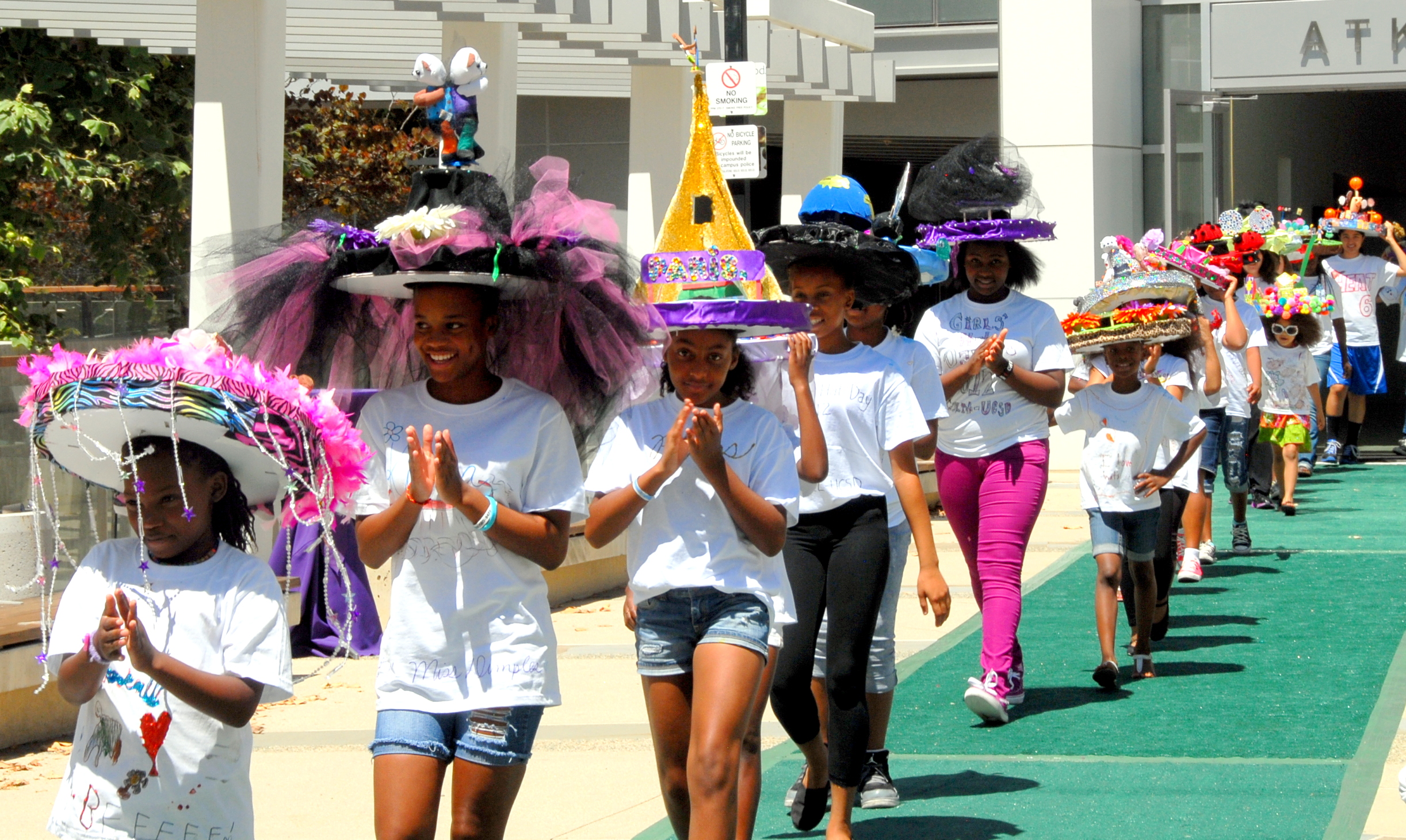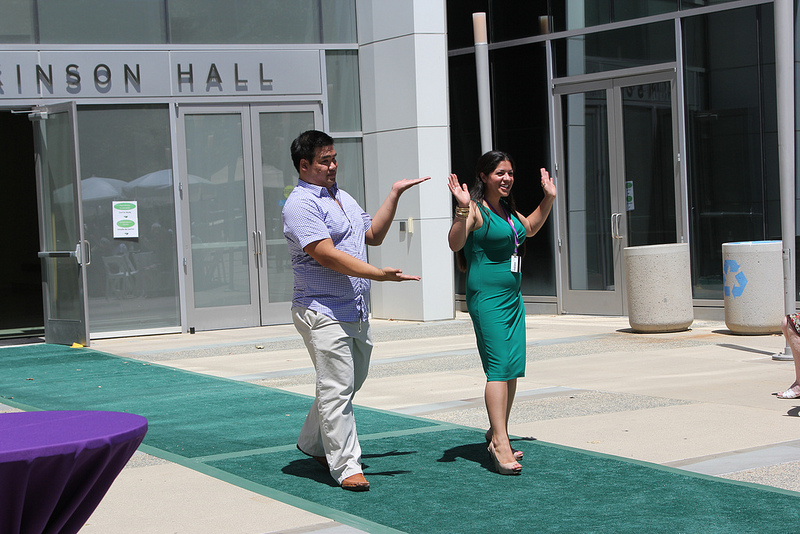'Girls Hat Day' Melds Fashion and Function to Get Girls Interested in Engineering
By Tiffany Fox, (858) 246-0353, tfox@ucsd.edu
Aug., 23, 2012, San Diego, Calif. — It’s not often you hear a room full of tween and teen-age girls discussing breadboards, LEDs and Arduino servos like they were the latest hot fashion accessories from Forever 21.
|
Then again, for the girls who participated in Girls Hat Day Saturday at the University of California, San Diego, breadboards, LEDs and Arduino servos are the latest hot accessories (especially when they’re combined with a little bling and some strategically placed pieces of flair).
Girls Hat Day — a “runway show” featuring electro-mechanical hats designed and engineered by girls ranging in age from 5 to 15 — was the culmination of a five-week outreach program hosted this summer by the California Institute for Telecommunications and Information Technology (Calit2) at UC San Diego. The program, led by Calit2 MyLab Director Saura Naderi and sponsored by ViaSat, aims to get young girls, particularly young girls from underserved communities, excited about science and engineering.
“It’s really something special to watch a 9-year-old explain to a 5-year-old how an LED works,” said Naderi, who graduated from UCSD in 2007 with a degree in electrical engineering and is also an outreach director for the NSF-funded Variability Expedition project. “I was pleasantly surprised by how smoothly everything went. I pre-ordered the ‘decorative’ elements of the hats -- everything from fake flowers to stuffed toys — which, in a way, limited the girls’ creativity, but in the end that allowed these kids to be more focused with what they had to work with.”
|
The results were — to steal a phrase from New York Fashion Week — stunning. With Beyonce’s “Run the World (Girls)” as musical accompaniment, each of the program’s 28 participants strutted down an astroturf runway with her custom-made hat atop her head, servos whirring and LEDs blinking.
Many hats reflected the personalities of their creators. Sereniti Davis, the seven-year-old diva who led the fashion show, outfitted her hat with zebra print, hot pink feathers, a rotating flower and stuffed horses worthy of any hat worn at the Del Mar Races. Twelve-year-old Pariss Payne, staying true to her first name, built a scale model of the Eiffel Tower complete with an animatronic couple dancing atop its spire.
“What we want these girls to learn is, you have to be you, on top of being in the field you’re in,” said Ebonee Williams, an engineer who is now the director of the UC San Diego Gordon Leadership Center as well as an invited speaker at the Girls Hat Day fashion show. “Females look at everything differently. Engineering is about problem-solving and if you don’t look at the problem from different angles, you don’t come up with the best solutions. With a program like this, we can play in worlds we don’t always see represented in the engineering field.”
|
This early exposure to engineering seemed to resonate with many of the girls participating in the program. Michelle Fleming, 14, said that if she ever decides to become an engineer, “now I have background. I had fun doing the hats, so yes, one day I would love to be an engineer.”
Aside from picking up a basic handle of electronics and product design, many of the girls also gained valuable interpersonal skills as a result of working with professional female engineers.
“They’re getting exposure to professionals in the engineering field and getting to know they’re just ordinary people, just like them,” remarked Veverly Anderson, the youth program coordinator at Town & Country Learning Center, which is one of Calit2’s community collaborators and a service provider to many of the girls participating in Girls Hat Day. “When they interact with the engineers at UCSD and ViaSat they find out, ‘Hey, she was a kid just like me and she went to public school just like me, and I can be like her!’ They’re learning how to interact with not just adults, but professional adults.”
Sharlanea Cleveland, mother of China, age 11, echoed Anderson’s sentiment.
“This program has opened up a different door for China, just to know that engineering exists and what goes into it,” she noted. “It’s not just math and science — it’s so much more than that. But this experience also helps teach these girls how to be ladies. I don’t know if you’ve noticed, but that’s not very common in some of the reality TV programs a lot of these girls watch.”
Added Anderson: “We consider this program our ‘reality TV.’”
Media Contacts
Tiffany Fox, (858) 246-0353, tfox@ucsd.edu



